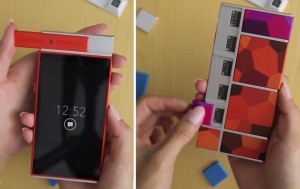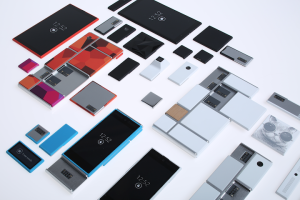Google’s Build-It-Yourself Smartphone Due Next Year
Google has designed a build-it-yourself ethic to one of its new smartphones and it should be available as early as next year. The ambitious Project Ara is a device that starts with a piece of base hardware, known as an Endo that lets the user attach to it separate devices and modules. The phone will start out as essentially just a frame, screen, Wi-Fi connection and processor with customers expected to put in the rest of the effort and build a phone around their demands.
Head of Google’s Project Ara, Paul Eremenko, said at the phone’s developer conference that “It’s called the Grey Phone because it’s meant to be drab grey to get people to customise it.” The core frame of the phone according to Eremenko will be built to last around six years, with traditional major smartphone components that can be swapped in and out for new ones to let the customer focus specifically on what they want their phone to do.
The modular tiles will connect to the Endo skeleton with electropermanent magnets. When an electrical pulse is switched on they’ll create a solid bond to the phone and when the pulse is switched off, the magnet releases the bond allowing you to change the module. Cameras, batteries, antennas, processors and improved Bluetooth are some examples of what can be attached.
The Ara team spoke of their vision at the developer conference, attempting to draw both hardware and software developers to the new platform. “If it can be other things, we encourage that,” said Eremenko but conceded they want Ara to be “ultimately a great smartphone first and foremost” allowing “developers to explore different branches” of technology. The modules will be created by developers using the open source Module Developers Kit (MDK) that was just released.
Google will be looking to challenge the market dominated by Apple and Samsung with a base model that could cost as little as $50 to produce, though the retail cost will be determined by commerce partners. The company plan to have an ecommerce site much like their Play Store where you’ll be able to purchase modules online, just like an app. They showed off the medium prototype which is similar in size to newer smartphone models like the Samsung Galaxy S5. Moreover the MDK outlines a mini phone and a larger phone on par with the size of a Samsung Galaxy Note to also be in the works. A pre-production prototype will be shown off in September.
This isn’t the first time a modular smartphone has been attempted. Phonebloks is a similar modular smartphone created by Netherlands designer, Dave Hakkens, and collaborated with Motorola. Smartphones are sold on their flexibility, to offer a range of apps and hardware but do consumers want to personalize it? It should be noted that the design of Ara is sleek at least, without any protruding features with so many modules potentially at play.
Would you prefer to incrementally update your phone personally or stick to the tried and tested road of buying one with everything in it already? Is the modular concept too fussy or solving the problem of owning a phone with only the features you want? Let us know in the comments about your thoughts on Project Ara.




